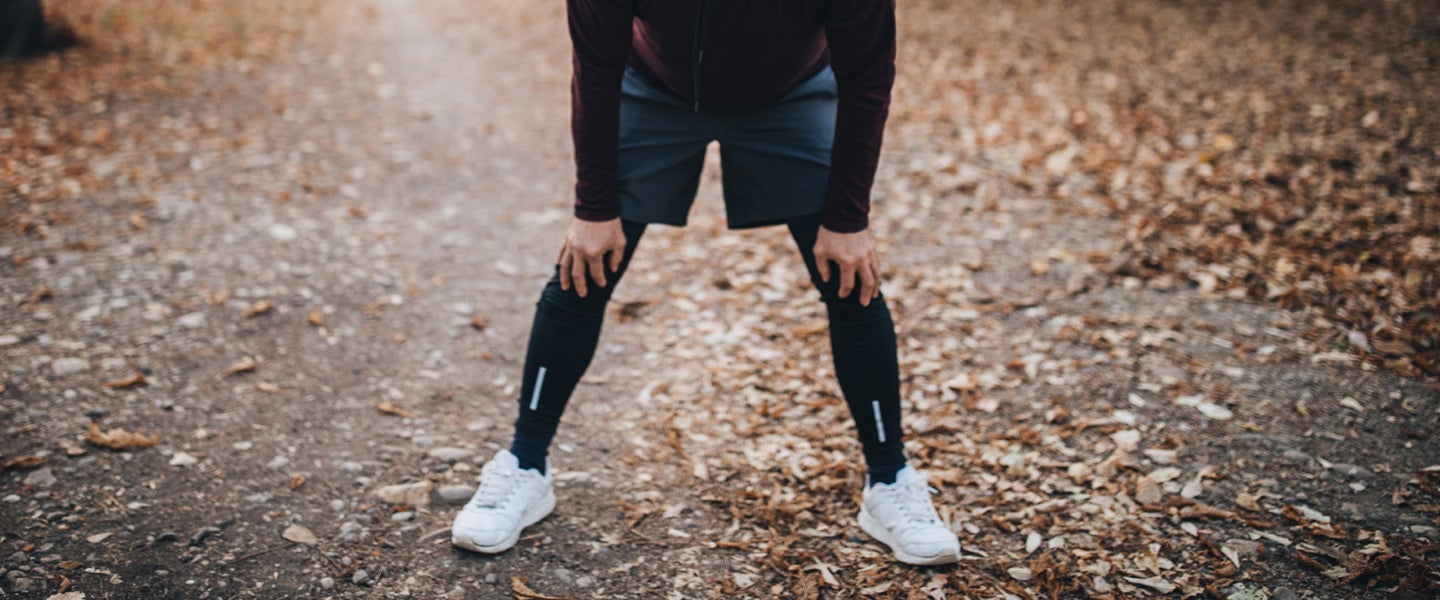I distinctly remember the moment my freshman basketball coach yelled at the team for catching our breath while running shuttle sprints. We had lost all 25 games we’d played that year, so sprinting back and forth while being screamed at was a pretty common occurrence, but this time was different.
After a few guys put their hands on their knees to gather some oxygen, my coach blew up, saying that not only was this scientifically the wrong way to catch your breath (he was also our biology teacher, so he would know), but psychologically, it communicated to the other team that we were both tired and weak.
Then, in an attempt to show how weak, he jumped in, out-sprinted everyone for two back-and-forths and promptly threw up in a nearby garbage can. As if that were the plan all along, he withdrew his face from the trash, put his hands over his head and explained that this was the proper way to replenish your lungs with air. Having your hands over your head opened up said lungs, he explained, allowing you to take deeper breaths, and thus, normalize your breathing faster — all while not appearing like helpless prey to the enemy.
It made enough sense that I’ve been putting my hands on my head to catch my breath ever since.
Thanks to a recent viral tweet, however, it turns out my high school coach (and apparently J.J. Watt’s too) was full of shit:
I have no clue where this study is from…
I have no clue why we’re getting this information from MC Hammer…
But mannnn, if this isn’t a win for every athlete in history…
We all knew that hands on head thing was bogus!!!
— JJ Watt (@JJWatt) May 26, 2020
It references a 2019 study in the Translational Journal of the American College of Sports Medicine that “examines the effects of two different recovery postures, hands on head (HH) and hands on knees (HK), as a form of immediate recovery from high-intensity interval training (HIIT).”
In order to compare the two postures, researchers measured the heart rate, volume of air displaced between normal inhalation and exhalation (or tidal volume) and volume of carbon dioxide exhaled by Division II varsity soccer players as they recovered from four-minute sprints on a treadmill.
Despite the hands-on-head, upright standing posture “being the most widely used recovery posture in sport,” researchers found it was the players who placed their hands on their knees that recovered faster. “Hands on knees posture significantly improved heart rate recovery, tidal volume and volume of carbon dioxide compared to hands on your head recovery,” the researchers wrote.
But why?
Per the study, my high school coach wasn’t far off on the science, he was just completely wrong on the postures.
To start, the difference between them mostly has to do with an area between your diaphragm and ribcage called the “diaphragmatic zone of apposition,” or ZOA. Researchers have discovered that maximizing the surface area inside your ZOA optimizes the efficiency of your diaphragm, leading to a faster recovery. Placing your hands on your knees does a better job of this than placing your hands over your head. Laying flat on your back is technically the best way to maximize this space, but that’s not an acceptable thing to do in the middle of a soccer game.
To put a human face on all of this, I reached out to Adam Kemp, a former professional basketball player who says his exercise-induced asthma had him gasping for air with his hands on his knees throughout his career. “All that time, I was constantly yelled at,” he explains. “People think you should put your hands over your head as a mental tactic to show that you’re not tired.”
But again, scientifically, they couldn’t be more wrong. The researchers determined that placing your hands over your head reduces the surface area within your ZOA, placing your diaphragm “in a suboptimal position, [thus] decreasing its mechanical efficiency.” Additionally, by placing your hands over your head, you tighten your abs and constrict your ribcage, which further hinders respiration.
Still, it’s going to be an uphill battle to remove the stigma around the hands on knees approach. “For me, in practice it’s completely acceptable to put your hands on your knees and gasp for air — fall on the ground for all I care,” says Slade Garza, a high school basketball coach in Texas. “But in a game, it’s unacceptable to show weakness to the opponent.”
Because no matter what happens in a lab, Garza considers the “mind games” of competition equally important. “It’s demoralizing to be dead tired and look over at your opponents and see them standing straight up, looking everyone in the eye,” he explains. “In contrast, seeing your opponent bent over is like blood in the water, and we’re sharks. Athletes need to be able to lie to themselves. You have to tell yourself you’re the best, or you never will be, even if it’s just internal.”
In other words, what we should really be doing is getting enough oxygen to our brains so we listen to what our body actually needs.

